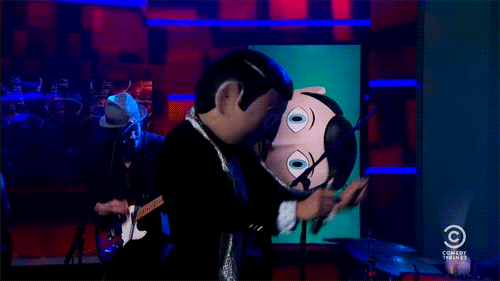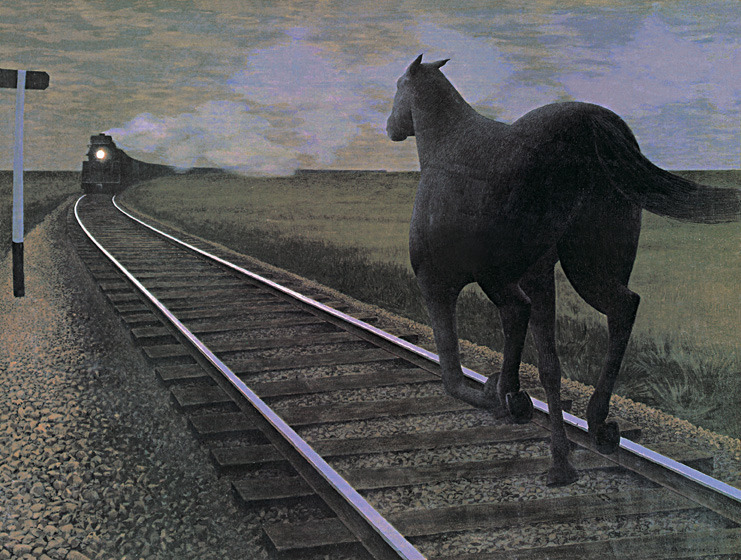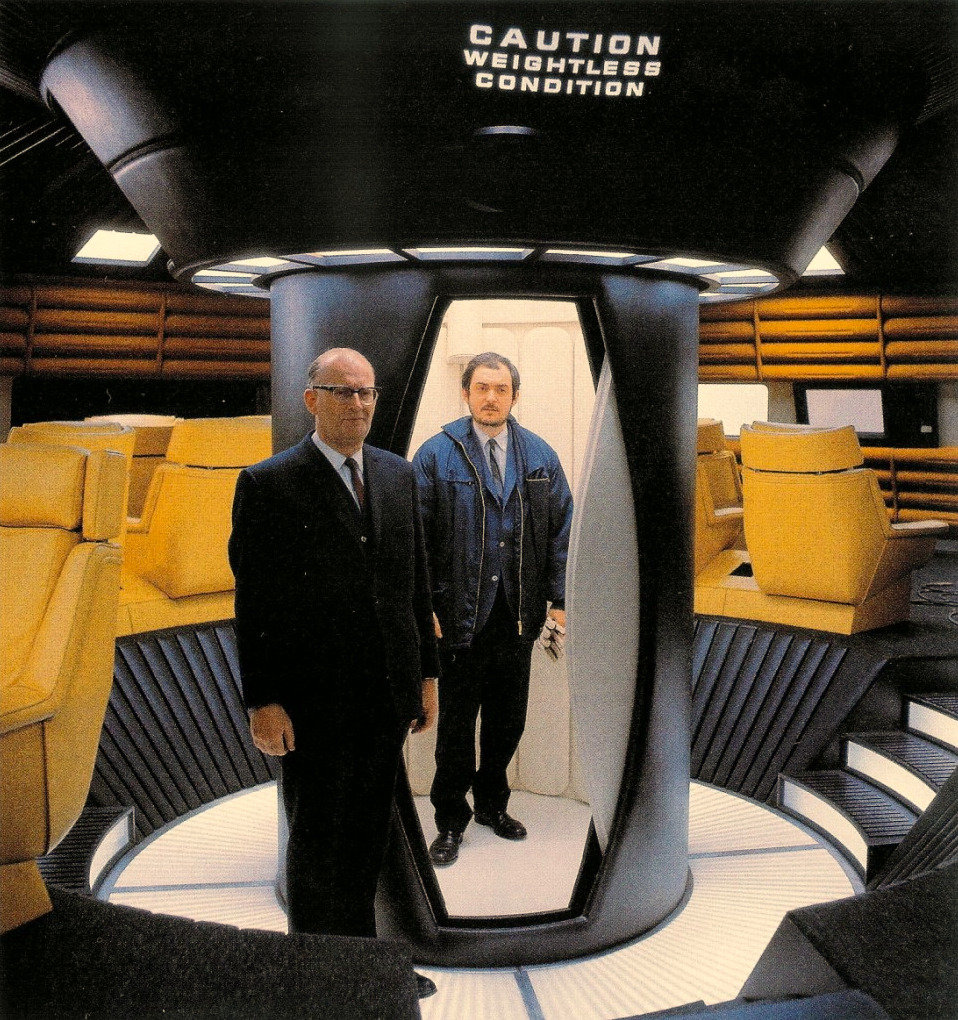Soderbergh told me recently that a lot of the show’s simplicity is driven by time and budget constraints. They’re working on a tight schedule and have to shoot a lot of script pages every day, so they don’t have the luxury of shooting things five different ways and deciding later which one they like the best. The use of compact, high-definition, light-sensitive digital cameras allows Soderbergh to shoot with one or two visible light sources, often of fairly low wattage, and achieve naturalistic lighting effects that Stanley Kubrick spent a fortune on when shooting the visually similar Barry Lyndon (the first movie with interiors shot entirely by candlelight) on 35mm film 40 years ago. I’m almost reluctant to convey all that information here, though, because it might make it sound as if what Soderbergh is doing is easy. It’s really »
A very good friends movie is finally hitting theaters this fall, so happy for her! Food Chains looks amazing.
Seems like I’m always reblogging every frame a painting.
Watch Frank
Yep, need to see this.
The Dance of Reality by Alejandro Jodorowsky (Official US Trailer) (by abkco)
I can’t wait!!!
Woah, I have been not paying enough attention to film. This is awesome news.
Internet Machine: A multi-screen film about the invisible infrastructures of the internet.
The creation of this installation offers us the sensation of “being there” and, through physicality, materiality and context, it aims to refute the idea that these spaces are immaterial and post-geographical, the incorrect myths that surround them, such as the myth of the “cloud”.
If Stuntmen from the old movies don’t have your full respect then I just don’t know what to say to you
l tried really hard not to reblog this
Yeah, it is indeed really hard not to reblog a fucking thing.
Dudes, really important note: this is not a stuntman, this is Buster Keaton, the star of all these films. He did all of his own stunts. All of them – well except one in the film “College” because he didn’t have enough time to learn how to fucking pole vault for the scene. He was practically an Olympic-grade athlete and did stunts so dangerous that his cameramen were told to keep rolling the camera unless one of two things happened: Buster yelled “cut!” or if Buster died. That was it. And he nearly »
“Horse and Train” (1954) by Alex Colville
As Wendy guides the pediatrician into her living room at the beginning of The Shining, they pass a painting of a horse galloping along train tracks towards an oncoming train. The painting is titled “Horse and Train” (1954) by Canadian artist Alex Colville.
A common interpretation of the painting is that it is intended to invoke feelings of helplessness and tension, and that the anxiety is heightened because we are not shown the outcome. It can only be assumed that the results will be disastrous if the subjects continue on their current course.
The choice of this image is certainly in alignment with the anxiety and tension Kubrick has already begun to invoke as the Torrance family prepares to move up to the Overlook Hotel for the winter.
Colville died in 2013 at the age of 92. After »
This is exactly what every sci-fi movie should aspire to be. This is where Lucas and Spielberg began, but sadly they got lost along the way in CG land, like everyone else. – Hat Tip to Nathan
Perfectly stated. Story and character still come first, even in sci-fi.
American Cinematographer: Blood for Oil
American Cinematographer: Blood for Oil
Read this entire article if you like making movies, everything in it is worth your time.
I always thought that it was great when people told me that my films are impossible to put in a drawer. So I’d say: ‘Oh, thank you’, and they’d respond: ‘No, that’s terrible. You would be doing yourself a big favour if you worked in a genre.’ And then they’d tell me I should work in science fiction, a genre I don’t find much of a connection with for some reason, even though it has so much potential. To some extent, science fiction and horror seem so close together as an element of fantasy. But I still like my horror films scary yet slightly allegorical to a degree where I’m not sure whether I can figure out the allegory. If I can’t figure it out, that’s even better. But it has to be rooted in something that »
The Making of Kubrick’s 2001
cinephilearchive:
A few days ago, I received out-of-print gem The Making of Kubrick’s 2001 (edited wonderfully by Jerome Agel, 1970). I’m still over the moon.
There have been countless words written about Stanley Kubrick’s visionary masterpiece 2001: A Space Odyssey — some good, some bad — but after 45 years, this superb book remains the only one you’ll ever really need. It is such a shame that this book is out-of-print. It is filled with everything you ever wanted to know about 2001. It leads off with Arthur C. Clarke’s short story “The Sentinel” and closes with a complete reprint of Stanley Kubrick’s interview with Playboy magazine. In between are profiles, interviews with technical advisors, effects secrets revealed, letters to Stanley from the moviegoing public, as well as »
PT Anderson Interview
I asked Anderson what was the first film he remembered seeing? “Rocky,” he replied. “With Sylvester Stallone. That was a really big deal to me. I told my mom, ‘I want to be a boxer.’ She said, ‘No, no, no – you want to be a writer – Rocky also wrote the movie!’ I went out running a couple of mornings to be like Rocky and I thought, ‘Fuck this – I’ll take my mom’s advice and write.’”
David Fincher’s Thoughts on Digital
I like the fact that there’s no guilt, you can just delete stuff. If something’s not worth the time that it took for everyone to say it, you can just go beep and it’s gone. So I like the plastic nature of how I’m able to work in digital.
…. Also, you have a giant monitor that everybody, from the boom operator to the makeup artist to the actors to the dolly grip – everybody’s looking at the same thing: this is the final, release print, it’s not going to change. And everyone can see, that shit’s out of focus, or her eyelash is coming off in the middle of that take, or she’s got a spot on her teeth.
…. And also, I hate voodoo. I hate the whole thing that you’re going to see seven out of eight takes that »
Your Argument About How Film is Better Than Digital is Old. Like, Really Old.
Since its earliest days, photography has been practiced by thousands who shared no common tradition or training, who were disciplined and united by no academy or guild, who considered their medium variously as a science, an art, a trade, or an entertainment, and who were often unaware of each other’s work…Some of these pictures were the product of knowledge and skill and sensibility and invention; many were the product of accident, improvisation, misunderstanding, and empirical experiment. But whether produced by art or by luck, each picture was part of a massive assault on our traditional habits of seeing.” -John Szarkowski, The Photographer’s Eye, 1966.


